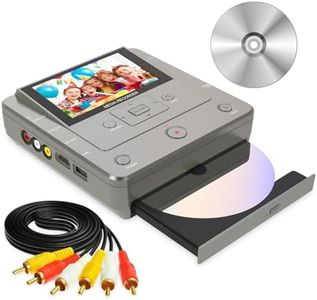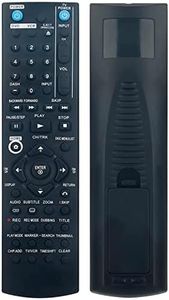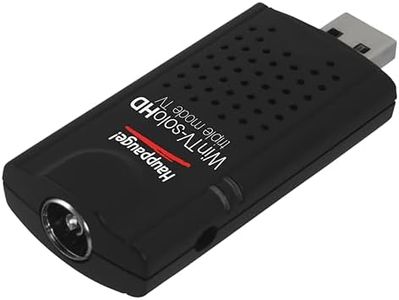We Use CookiesWe use cookies to enhance the security, performance,
functionality and for analytical and promotional activities. By continuing to browse this site you
are agreeing to our privacy policy
10 Best TV Recorders
From leading brands and best sellers available on the web.Buying Guide for the Best TV Recorders
When choosing a TV recorder, it's important to think about how and where you'll use it. A TV recorder lets you capture live television, pause, rewind, and watch programs later. Knowing your viewing habits—such as how many shows you want to record at once or how long you want to store them—will help guide your decisions. It's also worth considering compatibility with your existing TV and whether you want extra features like streaming or remote access. Focusing on a few key specs will help you find the best fit for your needs.Storage CapacityStorage capacity refers to how much recorded TV content the device can hold, usually measured in gigabytes (GB) or terabytes (TB). This is important because it determines how many hours of shows or movies you can store before needing to delete something. Devices with smaller storage (like under 500GB) are best for light users who watch and delete content quickly. Mid-range storage (about 500GB–1TB) suits families or regular viewers who keep shows for a while. Large storage (over 1TB) is great if you want to archive lots of content or record lots of high-definition programs. Think about how many shows you usually watch, and whether you like to keep them or clear space often.
Number of TunersThe number of tuners determines how many channels you can record at the same time. A tuner handles one channel at a time, so if a device has two tuners, you can record two different shows at once or watch one channel while recording another. Basic devices have one or two tuners, which is fine if you rarely need to record multiple things. More advanced options may offer four or even more, which is useful for big households or anyone who doesn’t want to miss out on overlapping programs. Think about your household’s TV habits—do you often have clashes between favorite shows?
ConnectivityConnectivity means what kinds of ports and connections the TV recorder supports. Common connections include HDMI, USB, and Ethernet for network access. HDMI is important for high-quality video output; USB ports allow for external storage or software updates. Ethernet or Wi-Fi gives your recorder access to online services, remote control, and sometimes streaming features. Decide if you need extra features like transferring recorded shows to other devices or remote access from your phone. Match the connectivity to your home setup and any smart devices you want to use.
Supported TV Signal TypesThis specification tells you which types of TV broadcasts the recorder can receive. The main types are digital terrestrial (DVB-T/T2), satellite (DVB-S/S2), or cable (DVB-C). It's crucial because the device must match your home’s broadcast signal, otherwise it won’t work correctly. If you get TV via an antenna, look for terrestrial support; for satellite dishes, you’ll need satellite compatibility; for cable, cable compatibility is essential. Check your current TV signal source and make sure your recorder matches.
User Interface and FeaturesThe user interface is about how easy the recorder’s menus and guide are to use. Features may include things like series recording, smart scheduling, pause/rewind live TV, or remote access through apps. A simple, responsive interface is more enjoyable and saves you time. If you want ‘set and forget’ recording, look for recorders with good program guides and automatic options. If you value extra features like streaming integration or remote access, make sure the recorder offers these. Consider how comfortable you are with technology and choose features you’ll actually use.












